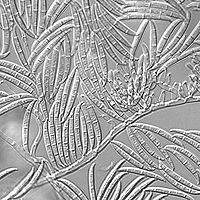
Photo from wikipedia
Spikelet abortion is a phenomenon where apical spikelet primordia on an immature spike abort. Regardless of the row-type, both apical and basal spikelet abortion occurs, and their extent decides the… Click to show full abstract
Spikelet abortion is a phenomenon where apical spikelet primordia on an immature spike abort. Regardless of the row-type, both apical and basal spikelet abortion occurs, and their extent decides the number of grain-bearing spikelets retained on the spike—thus, affecting the yield potential of barley. Reducing spikelet abortion, therefore, represents an opportunity to increase barley yields. Here, we investigated the variation for apical spikelet abortion along with 16 major spike, shoot, and grain traits in a panel of 417 six-rowed spring barleys. Our analyses showed a significantly large genotypic variation resulting in high heritability estimates for all the traits. Spikelet abortion (SA) varies from 13 to 51% depending on the genotype and its geographical origin. Among the seven spike traits, SA was negatively correlated with final spikelet number, spike length and density, while positively with awn length. This positive correlation suggests a plausible role of the rapidly growing awns during the spikelet abortion process, especially after Waddington stage 5. In addition, SA also showed a moderate positive correlation with grain length, grain area and thousand-grain weight. Our hierarchical clustering revealed distinct genetic underpinning of grain traits from the spike and shoot traits. Trait associations showed a geographical bias whereby European accessions displayed higher SA and grain and shoot trait values, whereas the trend was opposite for the Asian accessions. To study the observed phenotypic variation of SA explained by 16 other individual traits, we applied linear, quadratic, and generalized additive regression models (GAM). Our analyses of SA revealed that the GAM generally performed superior in comparison to the other models. The genetic interactions among traits suggest novel breeding targets and easy-to-phenotype “proxy-traits” for high throughput on-field selection for grain yield, especially in early generations of barley breeding programs.
Journal Title: Frontiers in Plant Science
Year Published: 2022
Link to full text (if available)
Share on Social Media: Sign Up to like & get
recommendations!